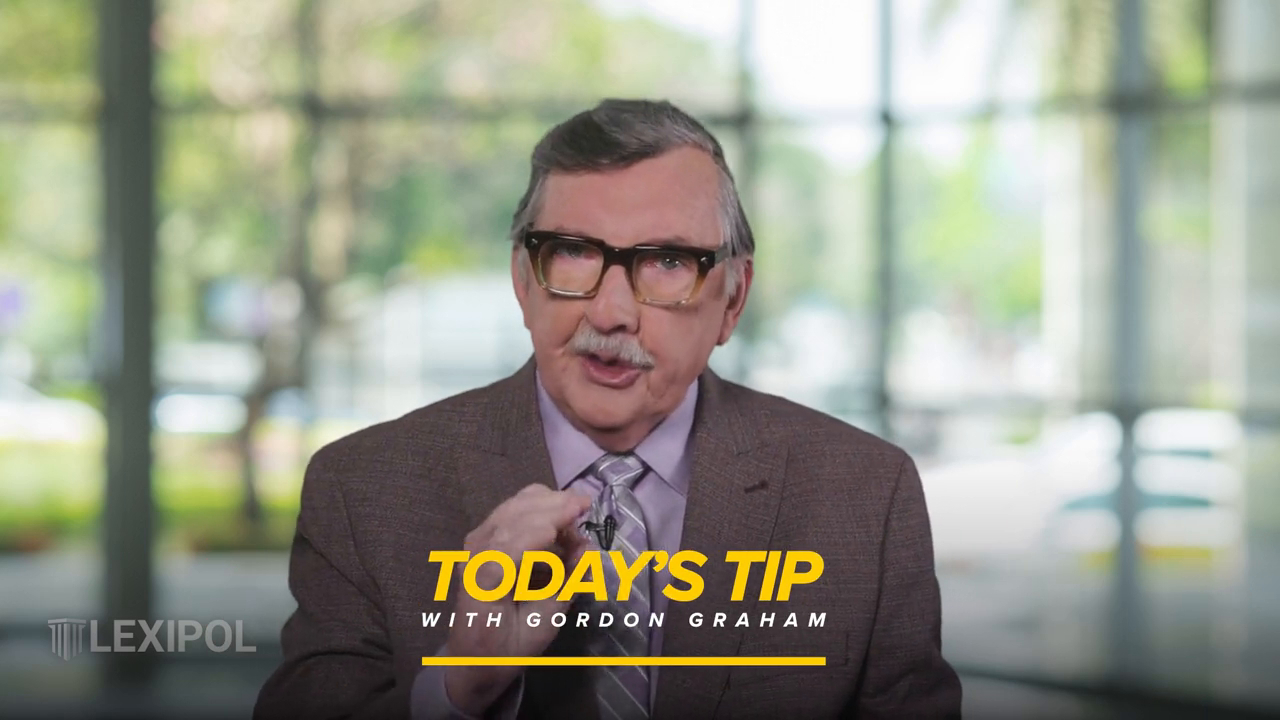Risk Management Part V – The Five Pillars
Category: Public Safety
Gordon Graham here with Today’s Tip from Lexipol. And Today’s Tip deals with Organizational Risk Management.
If you take the time to study the consequences that occur in our professions, almost without exception you can link them to the same five Root Causational Factors or problems lying in wait.
Take a look at the graphic on the screen. Risk managers study consequences and look for causational factors. It is always easy to find the proximate cause (the small “x” to the left of the Incident on the timeline above) as it usually immediately precedes the tragedy. But real risk managers go beyond proximate cause to continually search for the Root Cause (the problem lying in wait – the large “PLIW” on the left side of the timeline) of the consequence.
Risk managers study consequences and look for causational factors. Risk managers always look for Root Causational Factors (RCFs). And when you find them, you will usually see that they were problems lying in wait that people knew about or should have known about and no one acted to address the issues in advance. What really caused Challenger? What really caused Columbia? What really brought down the Titanic? What caused the Chernobyl disaster? What caused TMI? It is not always the obvious.
If you take the time to study the consequences that occur in our professions, almost without exception you can link them to the same five Root Causational Factors or problems lying in wait. With respect to Public Safety operations, the Five RCFs that I regularly see when I study nasty consequences are always the same.
Show me a public safety agency in trouble and I will link the problem one of these five issues: People, Policy, Training, Supervision, or Discipline.
So let’s take a look at these five issues. First PEOPLE:
Recruitment efforts – This is an obligation for all of us. Encourage your people to actively recruit everyday. They are the best tool in this process. We need an applicant pool that mirrors the relevant workforce in our respective communities. If you do not take this seriously, the U.S. government will help you take it seriously. To not have this is a problem lying in wait.
Comprehensive Background Investigations–Spending the money up front really works. Nickels today can save thousands tomorrow! The core ingredient of the hiring process is integrity. You cannot test for integrity. Not everyone is qualified to be in law enforcement.
Understanding the Probationary Process–Your trainers need to take this seriously. Your Sergeants need to understand this. Management needs to listen to the Sergeants. If they have people on probation who either can’t or won’t do the job, you must act now! They will not get better over time.
Meaningful Performance Evaluations-Supervisors have a critical role here and you have to have the guts to be honest with your personnel. Good men and women will meet and exceed your level of expectations. Please, follow your systems.
Audits, Controls and Early Warning Systems and Promotional Considerations-I know that Public Safety Organizations have some of the finest people I’ve ever met working for them. However having good people is not enough. Good people need direction on how to do their job. Good people need good policy and that is where pillar #2 comes in: POLICY.
Unfortunately, as I travel around America, I see the same policy issues over and over again. I see missing policies, out-of-date policies, non-existent policies, stupid policies, policies written by people who have never performed the task in their life, policies inconsistent with other policies, policies by crisis, even unconstitutional policies etcetera, etcetera. There are many policies required by law and many agencies are missing those policies.
I also see a huge lack of consistency with policies. There are hundreds of public safety agencies in the 50 states out there and in many states each agency has a different way of doing business. This is another huge problem lying in wait. You are on the Lexipol website to view Today’s Tip from Lexipol. We are in business to help you solve many of these policy problems. Take a look around the site after we’re done with Today’s Tip.
Next week we’ll finish up with the five pillars and wrap up our series of Today’s Tips on Risk Management.
And that is Today’s Tip from Lexipol. Gordon Graham signing off.





